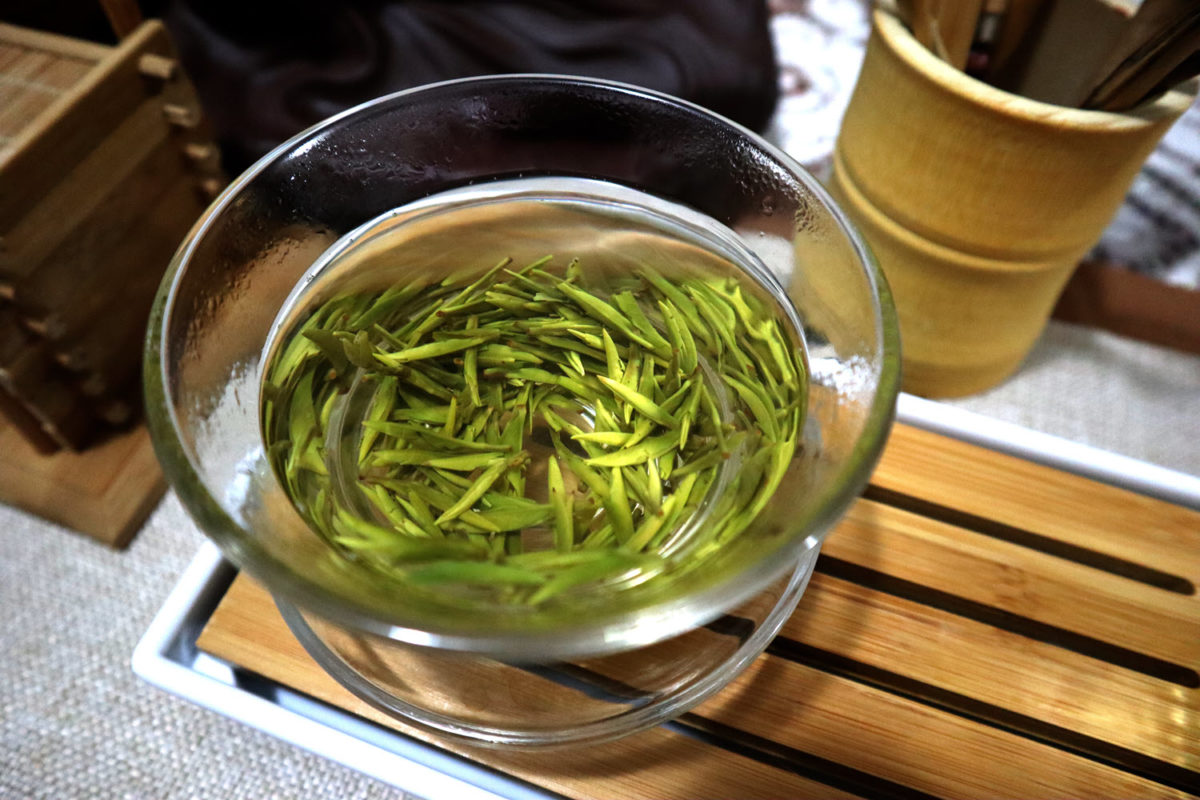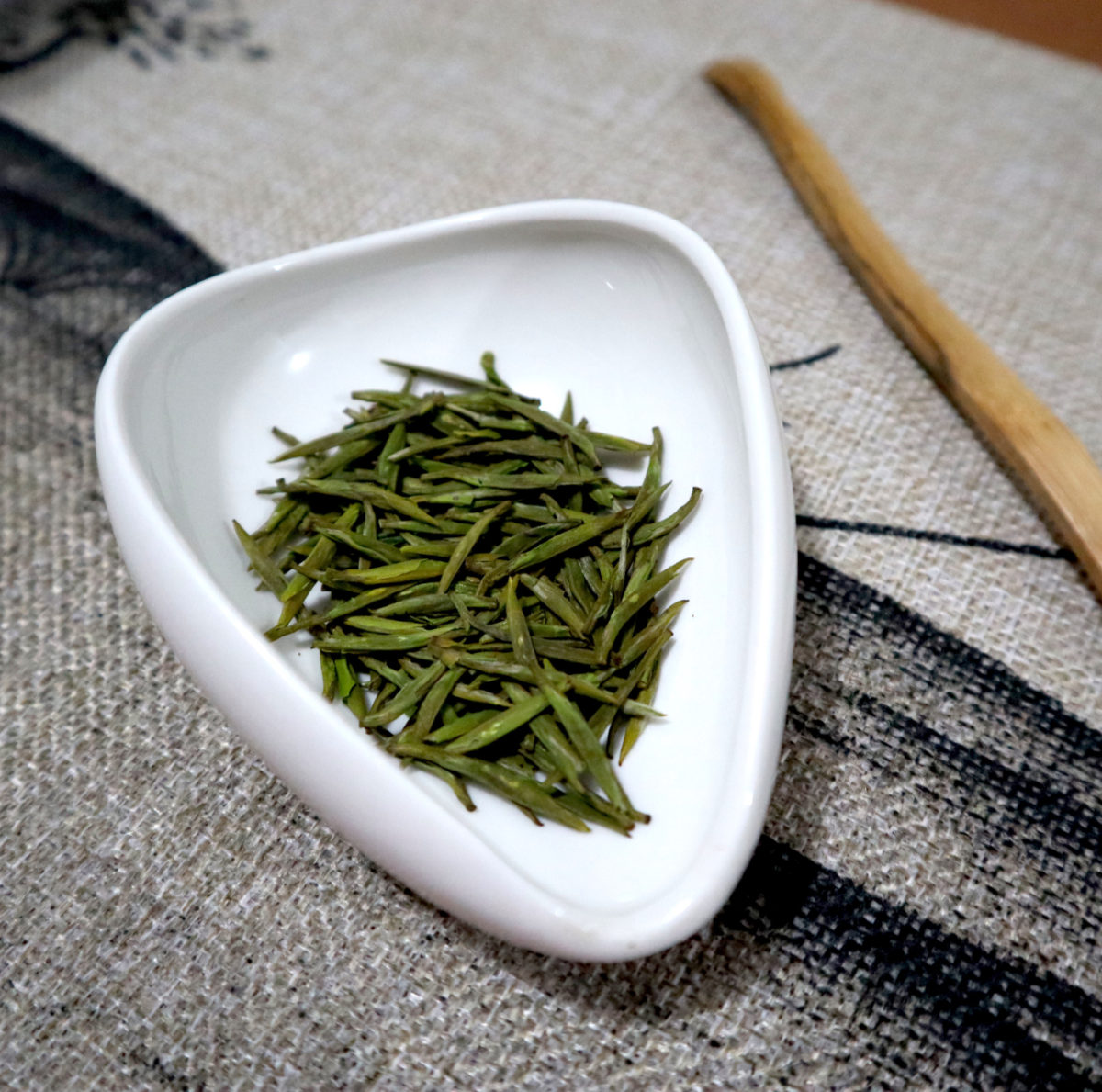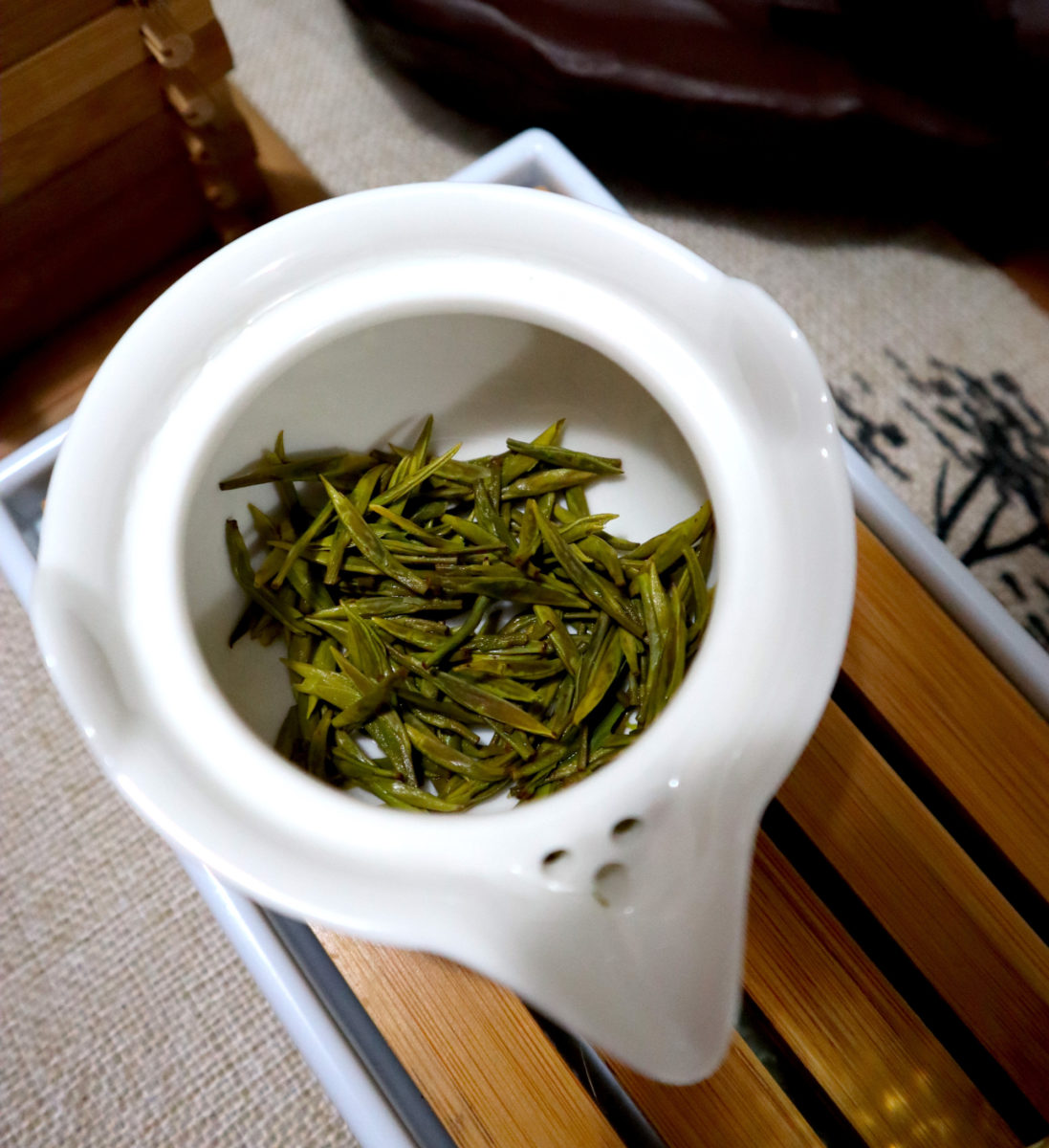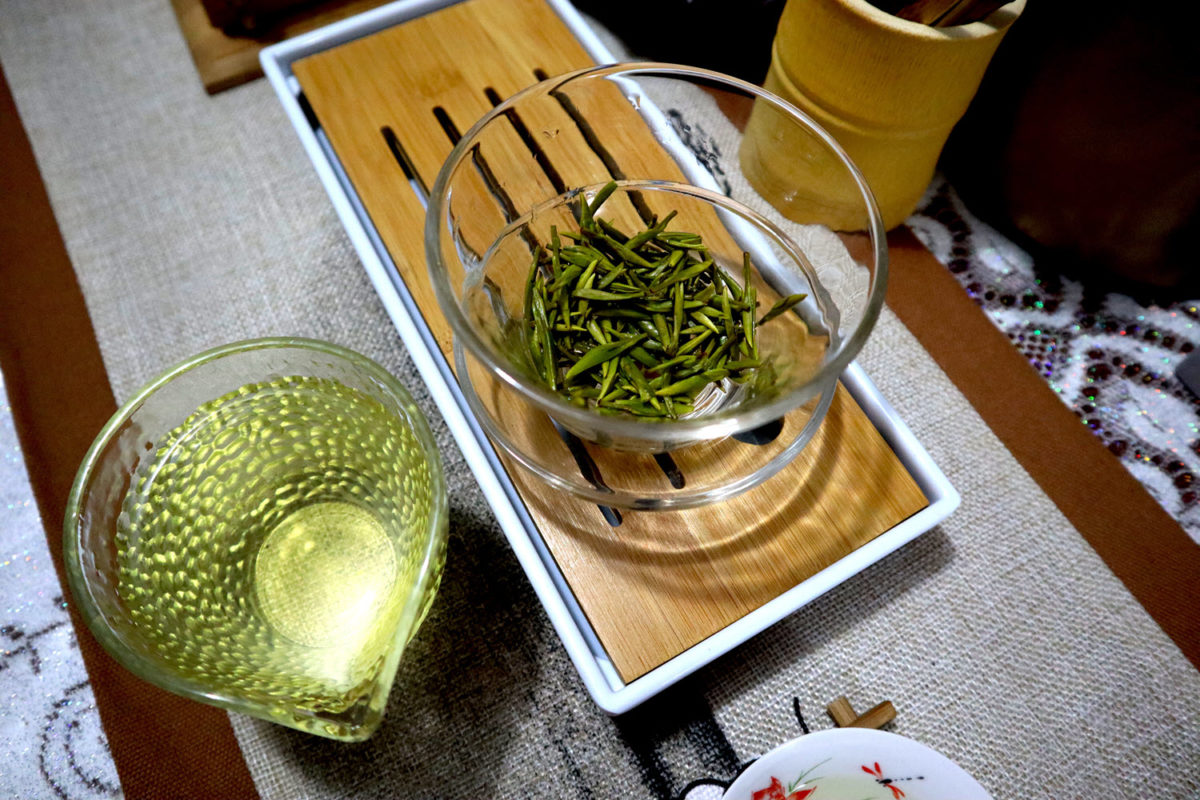
Tasting Notes
Wang Hai tea is a complex, delectable green tea. The 2019 vintage sells for $25 for a 62-gram canister.
Consider a daring variation by steeping this tea at 100 degrees Celsius for 15 seconds. The result is a deliciously sweet, creamy, caramel toffee flavor. Lower temperature to 80-90 degrees Celsius for following infusions, adding an extra 15 seconds to each steeping. Done this way, the infusions that follow have a fresh grassy taste with a background of sweet peas and hints of hops and malt. Each steeping has a notable sweet aftertaste that becomes sweeter and longer-lasting with each brew.
Wang Hai tea is a green tea grown on Mount Tiantai in Nanxi, in China’s Zhejiang Province. This award-winning tea was first produced in Ningbo City in 1980. It was named a provincial winner in 1984. The tea is made only of shoots. Any shoots that are purple in color or insect bites are not harvested. The tea is plucked before China’s Qingming Festival of Pure Brightness (April 4). Teas harvested during this period are highly prized in China because of their rarity (the pre-festival harvest lasts around 10 days). Leaves plucked during this period are considered to make teas of greater complexity with delicate flavors.
Dry Leaf

The processed dry leaves are glossy, slender and banana-shaped. The color is a bright green with yellowish tips. Some silver hairs are noticeable, and in this photo, you can see that the tea pickers have done a good job of plucking as little stem as possible (another prized attribute of tea in China). The dry leaves have a delicate, sweet, grassy fragrance.
These leaves displayed in this photo are from the hands of a highly-skilled tea master with a gentle touch. Wang Hai is very dry and brittle – with only 6% moisture content (about half typical moisture content) – yet the tips are all still intact. Clearly, this is not a tea that could easily be mass-produced.
Spent Leaf

The spent leaves are also bright green, turning yellow, and plumper with each infusion. The liquor is a pale greenish-yellow. The spent leaves and the liquor both have a very faint sweet grassy aroma. This turns out to be a bit misleading as the taste of the liquor is much bolder than the sum of its parts.
Steep this tea 80-90 degrees Celsius for 2 minutes at a time; measure 3 grams of leaves to 180ml of water. The tea is not known to hold up under multiple infusions. However, I found that following the manufacturer’s instructions resulted in 4 good infusions. This tea steeped for long periods of time without becoming astringent, which is quite impressive for a green tea.

Jaq, great article. So interesting. Dawn :o)
Thanks Dawn.
Dear Jaq,
a few days ago I received a package of wanghai tea from a friend coming back from his hometown in China to Germany. I had a long journey already through many different teas, green teas especially, and I must say this wanghai is surely one of the finest I have tasted.
Thanks to you, I also got to know something about the background of the tea and how to prepare it.
Thanks a lot! Hope to read more from you.